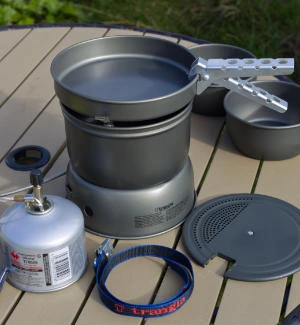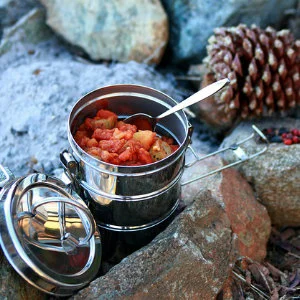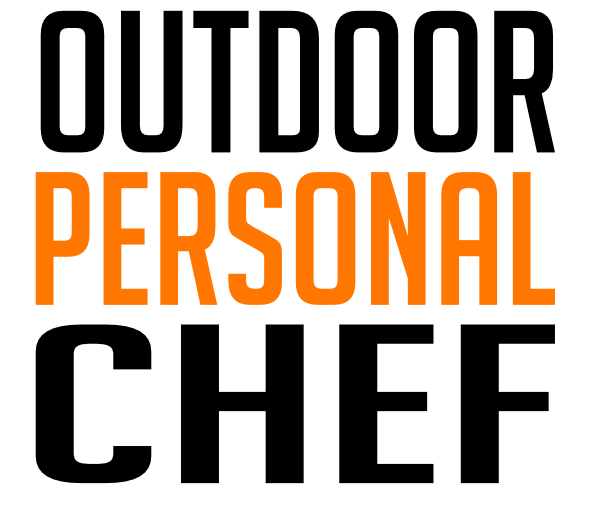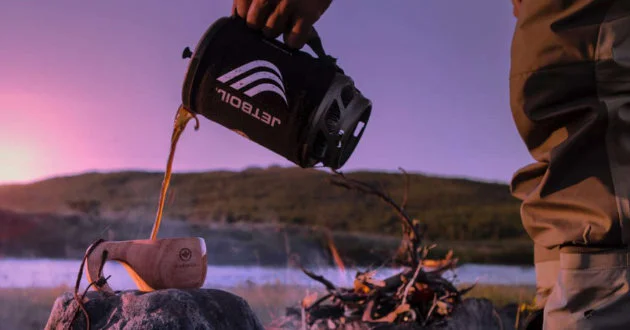Even if you have a stove with a built-in igniter, you should always carry another way to create a spark to light your camping stove. You should carry a disposable lighter, matches or a Ferrocerium rod. Having a backup method will ensure you can always create a spark to make a flame.
As a professional Chef who loves to camp to unwind, cooking out in the open is a joy for me. Being able to light my camping stove under any condition is a priority. In the following article, I will share with you different methods to light your camping stove and why it’s always important to be able to create a spark.
How do you light a camping stove?
To light most camping stoves, you first have to create a spark. You don’t necessarily have to be able to create a flame to get camping stove lighting, just a spark that will ignite your fuel source.
In some conditions, you may need to create a flame to light your fuel source, and in the following sections, I will cover which fuel types might need a flame and which don’t.
Types of Fuel for Camping Stoves.
You can use four main types of fuels when it comes to camping and creating fire to cook your food or heat water. All can be used in one form or another for camping stoves and are readily available to buy or to find.

Liquid Gas
One of the main fuels used for camping stoves comes in the form of liquid gas. This liquid gas comes in small to medium-sized canisters that you can hook up to your camping stove and provides all the fuel you need to cook your meal.
The main gas used for camping is Butane, Propane, Isopropane or a mixture of each. Each gas has its advantages and disadvantages, and which one you use depends on the time of year you are camping, your budget and your needs. To read more about the difference in each gas, read my article on Butane vs Propane Camping Stoves.
Liquid Fuel Alcohol/Spirits/Gels
The next most commonly used fuel for camping stoves is alcohol or spirits. Alcohol and spirit burners are very light in weight and normally require fuel to be carried and stored separately from the burner. These fuels are inexpensive and easily sourced in most countries, but they take longer than gas burners to cook or heat your food.
The main fuels used for spirit burners are methylated spirits or alcohol fuels based on methanol or Ethanal, such as wood alcohol or surgical alcohol.
Spirit burners tend to cook food slower than regular gas burners and also can create soot on the bottom of your cooking pots and pans.
In colder months, you will often need a flame to get your alcohol stove lighting; in this case, a spark won’t do. The cold lowers the temperature of the fuel so much that it becomes impossible to light with a spark.
You will then need to warm your fuel or create a flame to get it to light. An easy way to light it is to take some paper or tissue paper, roll it into a cigar shape, place it into your spirit burner and then light the paper/tissue.
This method is often all needed to get your spirit burner lighting in cold weather.
Gel fuel is another liquid fuel used with spirit burners to heat food and water. It is made from bio-ethanol or isopropyl alcohol. Alcohol gels work for a similar amount of time as the spirit burners but tend not to give out as much heat. This means it may take a little longer to get your water to a boil.
The advantages of using alcohol gels for fuel are that they are much cleaner than spirits/alcohol fuels and are safe. If you knock over your gel fuel, it won’t spill as much as a liquid fuel.

Chemical Solid Fuel
Your chemical solid fuels normally come in small hexamine tablets (esbit tablets). These tablets often burn pretty clean, won’t liquefy and leave no ash once burned.
When I served in the military, you were often issued a hexamine cooker, mess tin and hexamine blocks to heat water for drinks and those lovely bags of beans and pork sausage.
I know there were other Meals Ready-to-Eat available, but I always got beans and sausage. At the time, I hated beans, but beans and sausage make a really tasty meal when you are out on the grounds.
“Hunger is the best sauce in the world,”
Miguel de Cervantes
Solid Natural Fuel
Regarding your solid natural fuels, we are talking sticks, twigs, pine cones etc. Fuels from your natural environment can be used to make a flame that will cook your food or boil your water.
When using natural fuels, you will require a flame, or you will need to use very fine tinder material that will take a spark, and then you gradually add more fuel to build up the fire.
Natural solid fuels often require special camping stoves to contain the fuel and allow pots and pans to be placed on top.
Four ways to light a camping stove
Here I will go over four of the most common items you can use to get your fire lighting. Having more than one method of lighting your fuel is important, so you should at least have two of the following options with you at all times. It’s better to have it and not need it than need it and not have it.
Built-in Igniters
Some stoves come with built-in ignition systems, which create a spark that can get your flame going. These ignition systems are most commonly known as ‘piezo’ ignition systems.
They work by creating an electric charge that makes a spark. Piezo ignition systems are spring-loaded, and the spark is created by pressing a button which causes a spring-loaded hammer to hit a crystal, creating a spark.
These systems, in practice, are fantastic for getting a flame going. In reality, they can often fail due to the small parts malfunctioning. This can leave your easy ignition system on your stove useless.
Disposable Lighter
Your good old trust disposable lighter. You really can’t go wrong with when you carry a disposable lighter to get your cooking stove working. Even if you run out of fuel for your light, you still have the wheel that rubs off flint to create a spark.
Disposable lighters are cheap and reliable and should be the first tool you call upon to create a flame to get your stove lighting.
A good alternative to a disposable lighter is to carry a zippo lighter or another form of flint lighter. The fewer movable parts to create a spark, the better.
Matches
Matches are a great backup tool to have to hand for getting your fuel burning and are light and semi-reliable.
Normally, day household matches work perfectly for getting your fuel burning, but you always have to make sure you keep them dry. Coating them in wax or storing them in a sealed container is a perfect way to keep your matches dry and usable.
One thing to keep in mind when using matches is to always include a striker with your matches when storing them.
Lighting a match when it’s cold and your hands shake can be difficult. Stormproof matches tend to work better in cold, wet weather. They are thicker, light, much easier than normal household matches, and often wind and water-resistant.
Matches are a perfect choice after the disposable lighter.
Ferrocerium Rod
A ferrocerium Rod (Ferro Rod) allows you to create a spark that will light most fuels. The Ferro rod works by scrapping off fine pieces of the Ferro that combust when they hit the air, creating shards of sparks.
To scrape off fine material, you need to use a sharp scraper such as the back of a carbon steel knife or a saw blade.
These shards of ferrocerium heat up to 6000 degrees Fahrenheit and can easily set it alight when directed onto a fuel source.
For solid fuels, you first want to start with very fine material, such as sawdust, charcloth or finely shaven wood. It takes a bit of practice and work, but it’s possible to get a flame going under most conditions.
A Ferro rod requires very little equipment or moving parts, but it would be the last tool I would take out to get a flame going.
You will see in most YouTube videos that people who camp will often take out a Ferro rod to start a flame. Most of this is for show and to make them feel like they are highly skilled outdoors people.
The main objective is to get a flame going and to get it done; just use the tool that requires very little work or skill.
You will get a flame going faster and easier with a disposable lighter or matches than a Ferro rod; these are your last resort if you lose your lighter, matches get wet, and your piece ignition system on your expensive stove craps out.
Remember KISS: Just Keep it Simple Stupid, and you won’t go wrong.
Do you need a lighter for a camp stove?
You should always carry a lighter and one or even two more ways to get a spark going with you if you go camping. The goal is to always have something that can make a spark to get a flame going. If you keep this in mind and don’t rely on fancy gadgets to light your stove, you won’t ever go wrong.
I hope this information I provided was of use and you now understand the importance of having several light sources with you when camping.
If you got this far, I want to thank you for taking the time to read and ask you to maybe check out more of the articles I offer.
I hope you enjoy your camping, get out as much as possible, and enjoy what you are doing.
Thanks once again.
"Outdoor Personal Chef" participe au programme Amazon Services LLC Associates Program, un programme de publicité d'affiliation conçu pour fournir un moyen aux sites de gagner des frais de publicité en faisant de la publicité et en établissant des liens vers Amazon.com. Nous participons également à d'autres programmes d'affiliation qui nous rémunèrent pour le trafic que nous référons.

